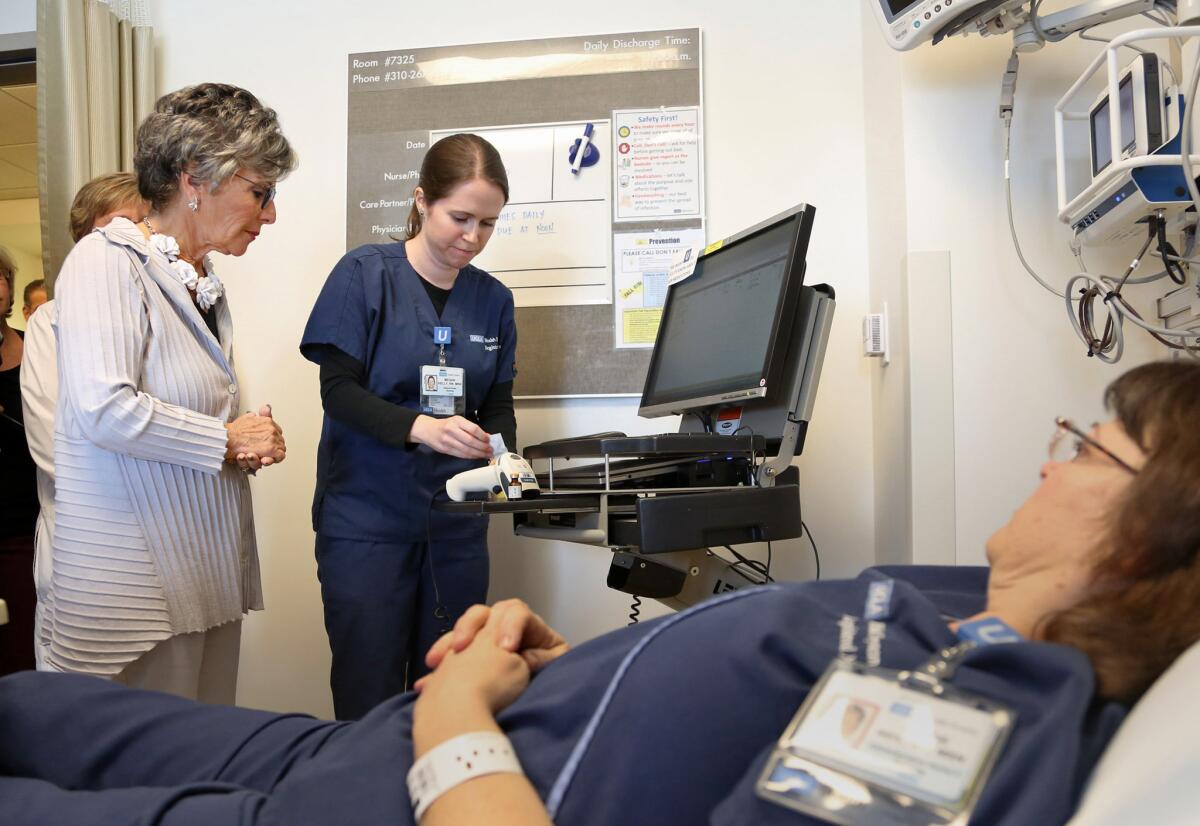Senator: Hospitals reducing treatment errors, but problems remain

Calling hospital errors “heartbreaking,” U.S. Sen. Barbara Boxer (D-Calif.) on Friday released a report detailing how some California hospitals are reducing medical mistakes that can cause infections, incorrect administration of drugs, falls and other complications.
Many medical centers are preventing errors, she said, but others still need to demonstrate they are serious about addressing the problem. According to some researchers, Boxer said, between 210,000 and 440,000 Americans die as a result of medical errors each year -- making medical errors the third leading cause of death in the nation, behind heart disease and cancer.
“My hope is this report will drive improvements,” Boxer told reporters during a morning press conference at Ronald Reagan UCLA Medical Center in Los Angeles.
Boxer said the 20-page medical errors report was the product of more than a year of work. In 2013, the senator asked federal agencies to catalog medical errors in the U.S. She received a list of the nine most common problems, including such things as adverse drug effects, catheter-associated urinary tract infections, certain blood stream infections, injuries from falls and bedsores.
Boxer’s office also surveyed 283 acute-care hospitals in California, asking what actions they had taken to prevent errors. About 53% responded, with many reporting computerized medication tracking; hand-washing programs to avoid infections; limiting early, elective childbirth and patient care practices designed to reduce incidence of pneumonia.
Riverside County Regional Medical Center reduced falls by assessing patients and assigning them a “fall score,” and then monitoring them based on their risk level. At Cedars-Sinai Medical Center, the report said, nurses reduced bedsores by more than 70% with better training and standardized reporting of pressure ulcers.
Boxer’s office also provided reporters with a list of California medical centers that had not responded to the survey.
“The public has a right to know what you’re doing to address the third-largest cause of death in the U.S.,” Boxer said.
During a tour of Ronald Reagan UCLA Medical Center, nurses showed Boxer a computer system that helps them track medications. In a nearby ICU room, doctors demonstrated a machine that emits pulses of ultraviolet light to help kill bacteria that cause life-threatening, hospital-acquired infections.
[For The Record, 9 a.m. PDT April 28: A previous version of this post stated that more than 60% of hospitals responded to Sen. Barbara Boxer’s survey. Boxer’s office said that 53% of contacted hospitals responded to the letter.]
eryn.brown@latimes.com
Twitter: @LATerynbrown
More to Read
Sign up for Essential California
The most important California stories and recommendations in your inbox every morning.
You may occasionally receive promotional content from the Los Angeles Times.











